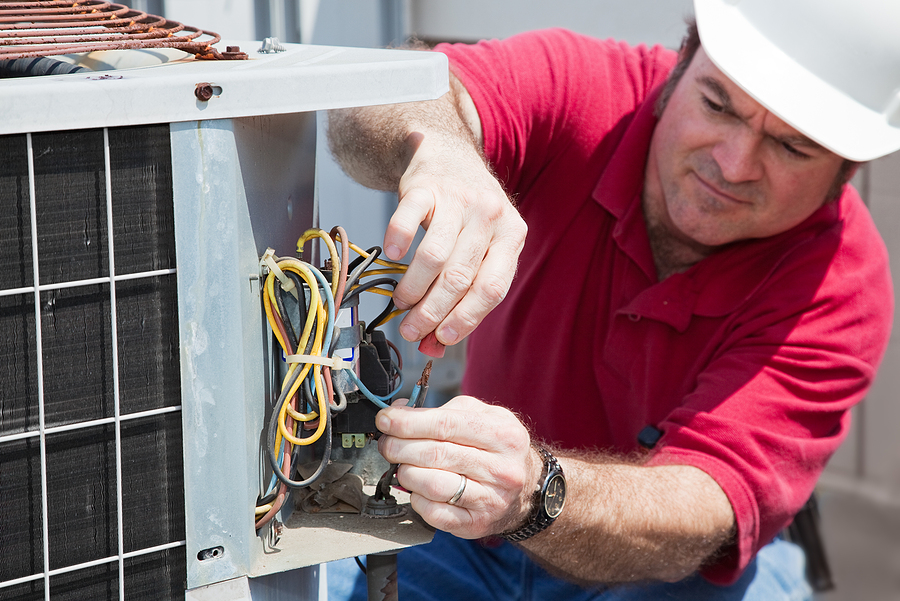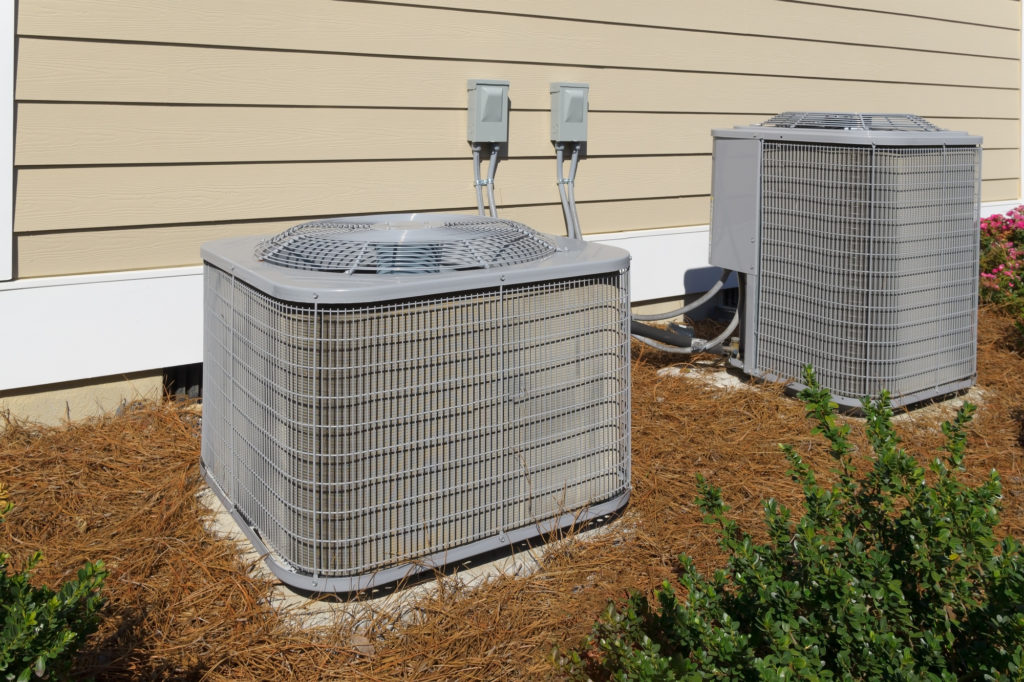
HVAC Efficiency Ratings and What They Mean for Your Home
As homeowners, we all want to save money on our energy bills while keeping our homes comfortable throughout the year. One way to achieve this goal is by ensuring that our HVAC systems are operating at their highest efficiency levels. In this blog, we will explore HVAC efficiency ratings and what they mean for your home.
What are HVAC Efficiency Ratings?
HVAC efficiency ratings are a measure of how efficiently an HVAC system operates. These ratings are expressed as a percentage, and they indicate the percentage of energy that an HVAC system converts into usable heating or cooling power.
There are three primary HVAC efficiency ratings to be aware of:
- SEER (Seasonal Energy Efficiency Ratio): measures the efficiency of air conditioners and heat pumps.
- AFUE (Annual Fuel Utilization Efficiency): measures the efficiency of furnaces and boilers.
- HSPF (Heating Seasonal Performance Factor): measures the efficiency of heat pumps when heating.
SEER Ratings
SEER ratings are used to measure the efficiency of air conditioners and heat pumps. The higher the SEER rating, the more efficient the unit. SEER ratings can range from 13 to 25 or more. An air conditioner or heat pump with a SEER rating of 13 is considered to be the minimum efficiency rating allowed by law in the United States.
When shopping for a new air conditioner or heat pump, it’s important to choose one with a SEER rating that is appropriate for your home. A system with a higher SEER rating will be more expensive, but it will also save you money on your energy bills in the long run.

AFUE Ratings
AFUE ratings are used to measure the efficiency of furnaces and boilers. The higher the AFUE rating, the more efficient the unit. AFUE ratings can range from 80% to 98.5% or more. A furnace or boiler with an AFUE rating of 80% is considered to be the minimum efficiency rating allowed by law in the United States.
When shopping for a new furnace or boiler, it’s important to choose one with an AFUE rating that is appropriate for your home. A system with a higher AFUE rating will be more expensive, but it will also save you money on your energy bills in the long run.
HSPF Ratings
HSPF ratings are used to measure the efficiency of heat pumps when heating. The higher the HSPF rating, the more efficient the unit. HSPF ratings can range from 7.7 to 13 or more. A heat pump with an HSPF rating of 7.7 is considered to be the minimum efficiency rating allowed by law in the United States.
When shopping for a new heat pump, it’s important to choose one with an HSPF rating that is appropriate for your home. A system with a higher HSPF rating will be more expensive, but it will also save you money on your energy bills in the long run.
What Do These Ratings Mean for Your Home?
The HVAC efficiency ratings of your heating and cooling systems have a significant impact on your energy bills. A more efficient system will use less energy to produce the same amount of heating or cooling power as a less efficient system. This translates to lower energy bills and reduced carbon emissions.
In addition to reducing energy bills, a more efficient HVAC system can also increase the comfort of your home. A more efficient system will provide more consistent heating and cooling, which can eliminate hot and cold spots in your home. This can make your home more comfortable throughout the year.

Choosing the Right HVAC System for Your Home
When choosing an HVAC system for your home, it’s important to consider the efficiency ratings of the system. A system with a higher efficiency rating will cost more upfront, but it will save you money in the long run by reducing your energy bills. It’s also important to consider the size of the system and the climate in your area.
A system that is too large for your home will cycle on and off frequently, which can lead to decreased efficiency and increased wear and tear on the system. On the other hand, a system that is too small for your home will have to work harder to keep up with demand, which can also lead to decreased efficiency and increased wear and tear on the system.
Additionally, the climate in your area can affect the efficiency of your HVAC system. If you live in an area with extreme temperatures, you may need a system with a higher efficiency rating to maintain a comfortable temperature in your home.
Maintaining Your HVAC System
Once you’ve installed an HVAC system with an appropriate efficiency rating, it’s important to maintain the system to ensure that it continues to operate at peak efficiency levels. Regular maintenance can also extend the life of your HVAC system and prevent costly repairs down the line.

Some maintenance tasks that homeowners can perform themselves include:
- Changing air filters regularly
- Keeping outdoor units clean and free of debris
- Checking thermostat settings
- Sealing air leaks in ductwork and around windows and doors
- Cleaning air vents and registers
Professional HVAC maintenance services can also be beneficial, as technicians can identify and address issues that may be affecting the efficiency of your system.
HVAC efficiency ratings are an important factor to consider when choosing an HVAC system for your home. SEER, AFUE, and HSPF ratings measure the efficiency of air conditioners, furnaces, boilers, and heat pumps. Choosing a system with an appropriate efficiency rating for your home and climate can lead to lower energy bills, increased comfort, and reduced carbon emissions. Regular maintenance can also help to maintain the efficiency of your HVAC system and extend its lifespan.
The Cost of Different HVAC Systems
The cost of HVAC systems can vary depending on the type of system and the efficiency rating. Here’s a breakdown of the cost of different HVAC systems:
Air Conditioners
The cost of an air conditioner can range from $1,500 to $4,000 or more, depending on the size and efficiency rating of the unit. A higher SEER rating will generally result in a higher upfront cost, but it will also save you money on your energy bills in the long run.

Furnaces
The cost of a furnace can range from $2,500 to $7,500 or more, depending on the size and efficiency rating of the unit. A higher AFUE rating will generally result in a higher upfront cost, but it will also save you money on your energy bills in the long run.
Boilers
The cost of a boiler can range from $3,500 to $7,500 or more, depending on the size and efficiency rating of the unit. A higher AFUE rating will generally result in a higher upfront cost, but it will also save you money on your energy bills in the long run.
Heat Pumps
The cost of a heat pump can range from $5,000 to $10,000 or more, depending on the size and efficiency rating of the unit. A higher HSPF rating will generally result in a higher upfront cost, but it will also save you money on your energy bills in the long run.
Investing in an HVAC system with a high-efficiency rating may require a higher upfront cost, but it can save you money on your energy bills in the long run. Choosing a system with an appropriate size and efficiency rating for your home and climate is also important. Regular maintenance can help to maintain the efficiency of your system and extend its lifespan. When considering the cost of an HVAC system, it’s important to factor in the potential savings on energy bills over time.
Unlocking Potential Cost Savings with Energy-Efficient HVAC Systems
Heating, ventilation, and air conditioning (HVAC) systems are critical for maintaining a comfortable and healthy environment in our homes and workplaces. However, these systems can also represent a significant portion of energy use. With rising energy costs and growing concerns about environmental sustainability, energy-efficient HVAC systems have become a major focus for homeowners and businesses alike. This blog post explores the potential cost savings of energy-efficient HVAC systems and discusses the additional benefits they offer.
Understanding Energy-Efficient HVAC Systems
Traditional HVAC systems can consume a lot of energy, leading to high utility bills. Energy-efficient HVAC systems, on the other hand, use advanced technology and design improvements to reduce energy consumption. This not only cuts down on energy costs but also reduces the carbon footprint of the buildings where these systems are installed.
Energy-efficient HVAC systems come in many forms. For instance, high-efficiency furnaces can convert nearly all the energy from their fuel into heat, compared to traditional models that may only be 56% to 70% efficient. Energy-efficient air conditioners use improved coil designs, compressors, and fans to deliver more cooling for each unit of energy they consume.
Potential Cost Savings
The potential cost savings from energy-efficient HVAC systems can be substantial. While these systems may cost more upfront than their less efficient counterparts, the energy savings they offer can offset the initial investment over time.
It’s estimated that high-efficiency HVAC systems can save homeowners between 20% to 50% in energy costs. For businesses, the savings can be even more significant due to the larger scale of their operations. Moreover, many utility companies offer rebates or incentives for installing energy-efficient HVAC systems, which can further reduce overall costs. Tax credits are also available in some regions, providing additional savings.

Additional Benefits of Energy-Efficient HVAC Systems
Apart from potential cost savings, energy-efficient HVAC systems offer several other benefits:
1. Improved Comfort: Energy-efficient HVAC systems often provide more consistent and precise temperature control, leading to improved comfort in your home or workplace.
2. Lower Maintenance Costs: These systems are typically built with higher quality components that can withstand heavy use, resulting in lower maintenance costs and longer life spans.
3. Environmental Sustainability: By using less energy, these systems help reduce greenhouse gas emissions and our overall impact on the environment.
4. Enhanced Property Value: Energy-efficient systems can make a property more attractive to potential buyers, contributing to higher property values.
5. Healthier Indoor Air Quality: Many energy-efficient HVAC systems include features that enhance indoor air quality, such as advanced filtration systems that can remove pollutants and allergens from the air.
Investing in an energy-efficient HVAC system can provide significant cost savings and a wide range of additional benefits. While the initial investment may be higher, the reduced energy costs, lower maintenance costs, improved comfort, environmental benefits, and potential property value enhancement make these systems a worthwhile investment. As energy costs continue to rise and environmental sustainability becomes ever more important, energy-efficient HVAC systems represent a smart choice for homeowners and businesses alike.
Top 10 Energy-Efficient HVAC Systems of 2023
The HVAC industry has made significant strides in recent years, with manufacturers producing increasingly efficient systems that offer superior performance and energy savings. Here’s a look at the top 10 energy-efficient HVAC systems of 2023, which have been recognized for their superior efficiency, innovative technology, and excellent customer reviews:
- Carrier Infinity Series with Greenspeed Intelligence: This series offers precise comfort with reduced energy use. The system’s variable-speed cooling and heating provide an ideal balance of energy efficiency and performance.
- Trane XV20i TruComfort Variable Speed: This HVAC system has a SEER (Seasonal Energy Efficiency Ratio) rating of up to 22, making it one of the most efficient systems on the market. It’s also designed for quiet operation and consistent comfort.
- Daikin DX20VC Air Conditioner: This model boasts a high SEER rating and uses a variable-speed compressor for efficient operation. It also uses a chlorine-free refrigerant that is environmentally friendly.
- Lennox Signature Collection XP25 Heat Pump: The XP25 is one of the most energy-efficient heat pumps available, with efficiency ratings of up to 23.5 SEER and 10.2 HSPF (Heating Seasonal Performance Factor), enabling it to offer significant energy savings.
- Rheem Prestige Series R98V Gas Furnace: This high-efficiency gas furnace features a modulating burner design and a variable-speed blower to provide reliable and efficient comfort.
- American Standard AccuComfort Platinum 20 Air Conditioner: This HVAC system utilizes variable speed technology to incrementally adjust its cooling output like a dimmer switch, providing precise temperature control and energy efficiency.
- Goodman GMVM97 Modulating Gas Furnace: This furnace has an impressive AFUE (Annual Fuel Utilization Efficiency) rating of up to 98%, meaning it converts almost all its fuel into usable heat.
- York Affinity Series YXV Air Conditioner: The York Affinity Series offers a high SEER rating and uses a variable capacity compressor to provide more energy-efficient cooling.
- Mitsubishi Electric Zoned Comfort Solutions™: This ductless system offers high SEER ratings and allows for precise temperature control in different zones of your home, saving energy by not heating or cooling unoccupied rooms.
- Bryant Evolution Extreme 280A Heat Pump: The 280A offers up to 20.5 SEER cooling and 13 HSPF heating efficiency, making it one of the most energy-efficient heat pumps available.

Remember that choosing the right HVAC system for your needs depends not only on energy efficiency but also on factors like your local climate, your home’s size and design, and your specific heating and cooling needs. Always consult with an HVAC professional before making a purchase. With their help, you can find an energy-efficient HVAC system that provides comfortable, environmentally friendly indoor climate control.
Considerations for a New HVAC System: Northern States and Central Air Conditioners
When it’s time to invest in a new HVAC system, there are several key factors to consider. This is especially true for those living in the northern states, where the climate can have significant effects on your heating and cooling needs. This blog post delves into some of these considerations, focusing on the role of central air conditioners and heating systems and the importance of high efficiency.
Central Air Conditioners in the Northern States
In northern states, where summers can get quite warm, central air conditioners play a crucial role in maintaining a comfortable indoor climate. However, because these states also experience cold winters, the air conditioning use is typically seasonal. Therefore, it’s essential to select a system that provides efficient cooling during the warm months without being overly expensive to operate or maintain.
High-efficiency central air conditioners are often the preferred choice in these situations. They are designed to maximize cooling output per unit of energy consumed, leading to cost savings on energy bills. Look for units with a high Seasonal Energy Efficiency Ratio (SEER), a measure of air conditioner and heat pump cooling efficiency. The U.S. Department of Energy mandates a minimum SEER rating for all new air conditioners, which has been progressively increasing over the years to promote energy efficiency.

Heating Systems in the Northern States
For the cold winters typical of the northern states, a reliable and efficient heating system is just as crucial. If your old system has been struggling to keep up with the cold, or if you’ve noticed a steady increase in your heating bills, it may be time for a new system.
When choosing a new heating system, consider its Annual Fuel Utilization Efficiency (AFUE), a measure of how efficiently a furnace converts fuel into heat over the course of a typical year. A higher AFUE means greater energy efficiency. As with air conditioners, the U.S. Department of Energy sets minimum AFUE standards for new furnaces.
Consider systems that offer modulating heat output, which can adjust the heat output more precisely to maintain a more consistent and comfortable indoor temperature. Also, consider the fuel type that is most cost-effective and readily available in your area. Natural gas furnaces are common, but in areas where gas is expensive or not available, options like oil, propane, or electric heat pumps may be better choices.
The Importance of High Efficiency
Investing in high-efficiency HVAC equipment can lead to significant savings over the lifespan of the system. While high-efficiency models may cost more upfront, they can save money in the long run through lower energy bills. According to the U.S. Department of Energy, even upgrading from a relatively recent but low-efficiency model to a high-efficiency model can result in substantial savings.
When investing in a new HVAC system, especially in the northern states, consider both the cooling and heating needs of your home. Look for high-efficiency central air conditioners and heating systems that will provide comfort in all seasons while keeping energy bills under control. Always consult with a HVAC professional to choose the system that best fits your home and climate.

Energy Ratings, Older Units, and Split-System Heat Pumps: A Closer Look at HVAC Efficiency
When you’re in the market for a new HVAC system, understanding energy ratings is vital. These rating systems provide a straightforward way to compare the efficiency of different models, from central air conditioners to split-system heat pumps. They can also help you see how a new system might perform compared to an older unit. In this section, we will delve deeper into energy rating systems and their significance.
Understanding Energy Ratings
The efficiency of HVAC equipment is often measured using energy ratings. These include the Seasonal Energy Efficiency Ratio (SEER) for air conditioners and heat pumps, the Energy Efficiency Ratio (EER) for air conditioners, and the Annual Fuel Utilization Efficiency (AFUE) for furnaces.
A higher energy rating signifies a more efficient unit. For instance, a central air conditioner with a SEER rating of 20 is more efficient than one with a SEER rating of 13. These ratings are determined through standardized tests administered by the U.S. Department of Energy and provide a reliable way to compare different models and brands.
Comparing New Systems to Older Units
If you have an older unit, it’s likely less efficient than the newer models available today. Over time, components can wear out and efficiency can drop, leading to higher energy use and costs. Newer models are designed to be significantly more efficient, thanks to advances in technology and stricter energy efficiency standards.
By comparing the energy ratings of a new system to your older unit, you can get an idea of the potential energy savings. Often, the cost savings in energy bills can help offset the cost of a new, more efficient system over time.

Split-System Heat Pumps and Efficiency
Split-system heat pumps are an excellent choice for efficient heating and cooling. These systems transfer heat rather than generate it, making them highly efficient. They also have the added advantage of providing both heating and cooling, making them a versatile choice for year-round comfort.
The efficiency of split-system heat pumps is measured using SEER and Heating Seasonal Performance Factor (HSPF) ratings. A higher SEER or HSPF rating indicates a more efficient system. Some of the most efficient split-system heat pumps available today have SEER ratings above 20 and HSPF ratings above 10.
Many split-system heat pumps can help control relative humidity in your home, leading to enhanced comfort. They can often remove moisture from the air more effectively than conventional air conditioners, helping to maintain optimal relative humidity levels. Energy ratings provide an invaluable tool for comparing HVAC systems’ efficiency, from split-system heat pumps to conventional air conditioners and furnaces. By understanding these ratings, you can make a more informed decision when investing in a new system, ensuring you choose a unit that offers superior comfort and energy savings.


